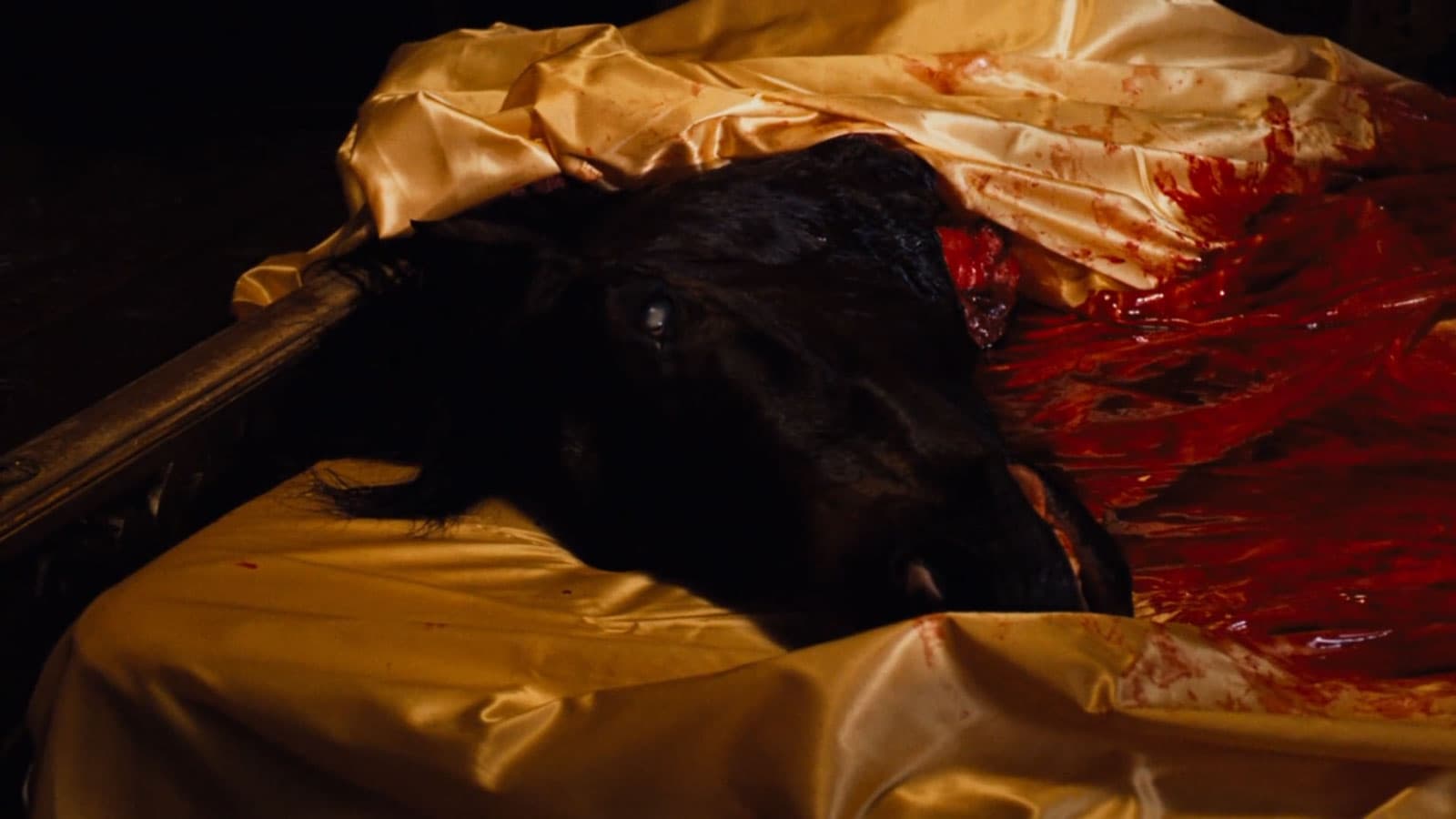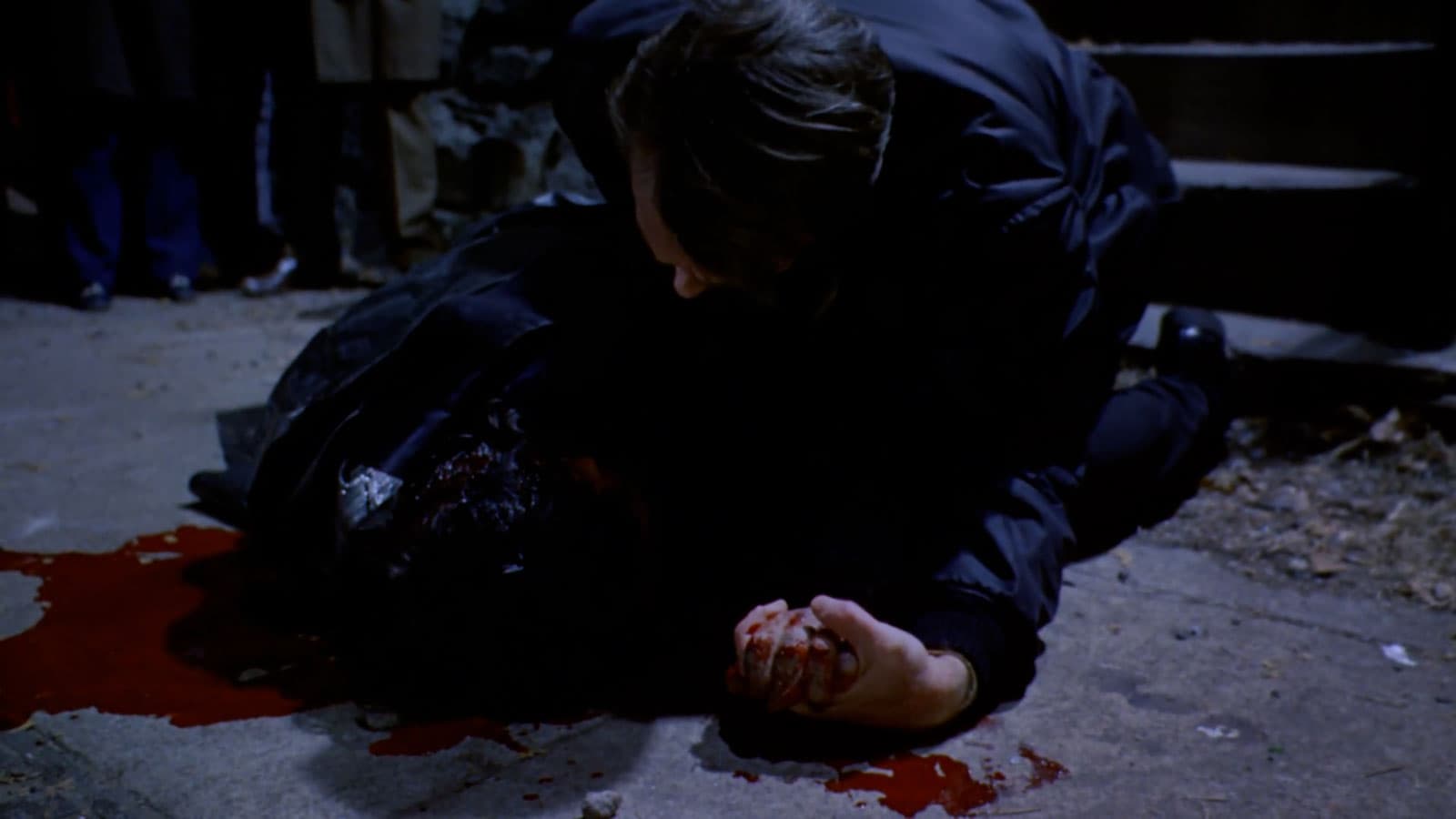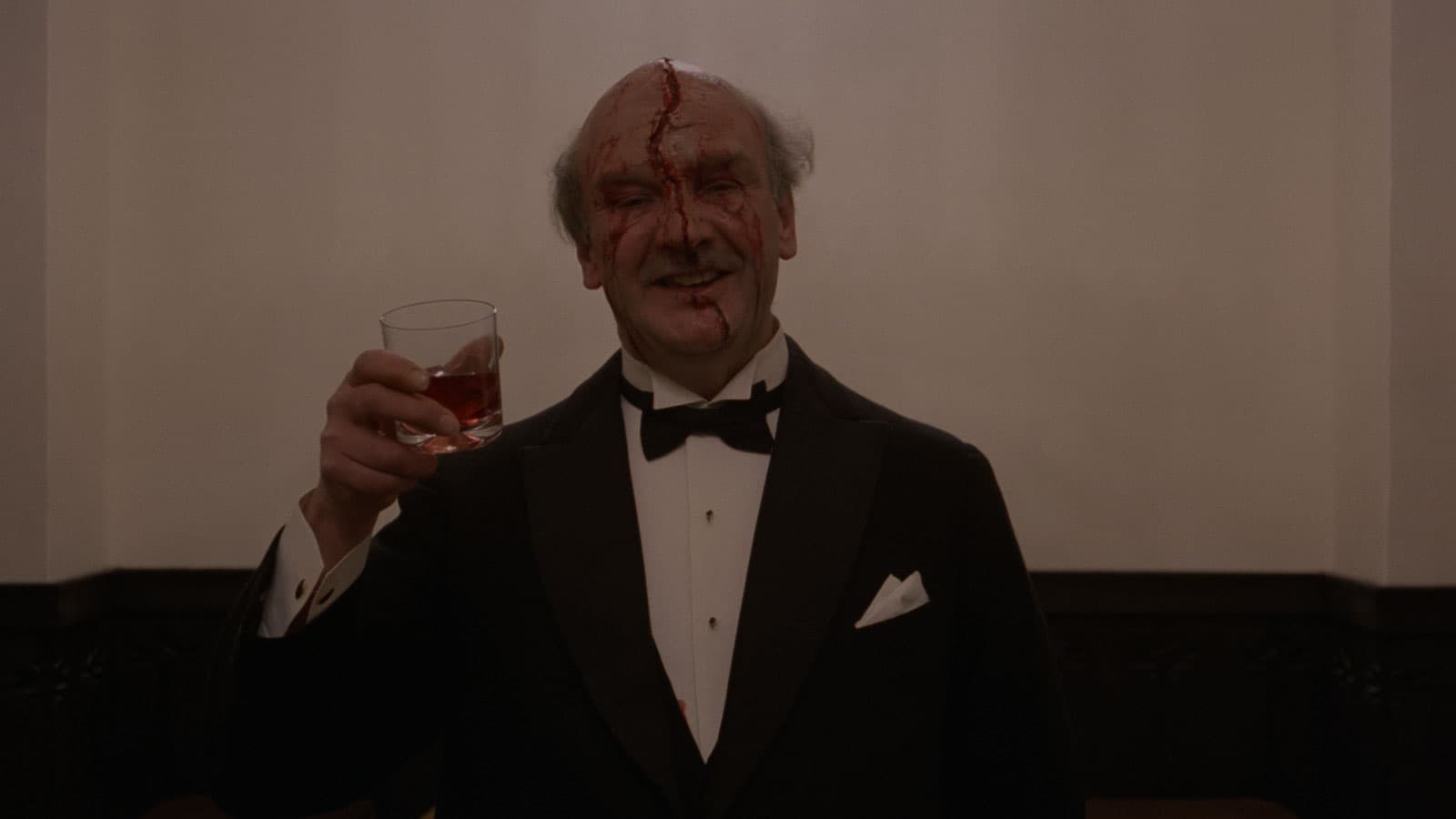
The Complete History of Fake Blood in Film and Television
Behind the Gore: The Use and Evolution of Fake Blood
The fascinating history of fake blood in film, television, and theatre spans over a century and continues to evolve with advancements in technology. Its integral role in both storytelling and realism is undeniable, as it adds a visceral and emotional element to any production. From the earliest applications in live theatre to black and white films to its widespread use in modern high-definition productions, fake blood has always been an essential aspect of creating memorable and captivating visual experiences.
Originally made from simple concoctions like crushed insects, pigments, and glycerin, fake blood, also known as theatrical blood or stage blood, has evolved into an elaborate range of mixtures that mimic the appearance and even the consistency of real blood.
Evolution of Fake Blood in Theatre, Film, and Television
As the industry progressed and the demand for authenticity increased, fake blood also underwent a transformation, both in terms of composition and application. Innovations in special effects, makeup, and even CGI have shaped new ways of portraying blood and gore on screen.
THEATRICAL BLOOD
(Pre-Cinema)

Theatrical blood has a long and fascinating history, even before its use in cinema and television. Originally, theater productions would rely on a simple red cloth to represent the blood, but as audiences demanded a more convincing portrayal of bloody scenes, new methods were employed to create stage blood.
Grand Guignol Theater
In the late 19th century, the Grand Guignol Theater in Paris popularized the use of gruesome special effects, including fake blood, in their horror plays. While the exact recipe used at Grand Guignol is unknown, it’s believed that they used a mixture of various ingredients, such as powdered carmine pigments from crushed cochineal insects and glycerin, to produce realistic blood.
Black and White Era

During the black-and-white film era, filmmakers faced unique challenges and opportunities in creating practical special effects blood that looked both realistic and fantastical.
The Hays Code and Film Production
The Hays Code, also known as the Production Code, played a significant role in regulating the content of movies from the early 1930s to the late 1960s. As a response to the perceived indecency in films at the time, this set of industry guidelines was designed to restrict the use of explicit content, including the depiction of fake blood.
Adhering to the Hays Code meant that filmmakers had to get creative with their use of fake blood in order to avoid censorship. This led to the creation of alternative ways to imply violence or gore without explicitly showing blood on screen. For instance, shadows and off-screen sounds were used to convey violent acts while carefully maintaining the code's standards.
In the 1950s and 60s, as the standards began to loosen, Hollywood movies prioritized dark colors and high-viscosity materials for fake blood. Often, chocolate syrup was used as a substitute for blood, as it produced a dark and viscous liquid that looked convincing on screen.
Alfred Hitchcock's Psycho
Alfred Hitchcock's classic thriller Psycho (1960), famously used fake blood in a number of scenes, most notably the shower scene. The blood was created using chocolate syrup, as it provided the appropriate appearance and consistency when captured by black and white film.
There's a bit of a debate about the brand; some say Hershey's, others say Bosco or even Shasta. Regardless of the brand, it was the newly invented plastic squeeze bottles that allowed for more realistic blood splatters.
Akira Kurosawa Films
The legendary Japanese filmmaker Akira Kurosawa utilized various techniques to create fake blood in his black-and-white films. In films like Rashomon (1950) and Seven Samurai (1954), Kurosawa experimented with makeup and practical effects to depict realistic blood and injuries. For example, he often used a combination of ink and dark paint to create a convincing visual effect for his samurai battles and other gory scenes.
Additionally, Kurosawa experimented with pressurized carbonation for dynamic spurts of fake blood in sword wounds.
Technicolor and Color Films

With the advancement of Technicolor and color films, fake blood had to evolve to appear more realistic. The need for a more convincing blood effect led to the development of Kensington Gore, a mix of clear Karo corn syrup, red food dye, corn flour, and water.
Kensington Gore
Kensington Gore, named after a street in London, became the earliest bespoke fake blood recipe. It was cheap and easy to modify, so it quickly became a standard for fake blood in stage and film.
This solution became Hollywood’s standard for fake blood and opened the floodgates for experimentation with color and consistency. Thus, a new era of special effects blood began.
Kensington Gore revolutionized the way filmmakers depicted blood on-screen, forever changing the cinematic landscape.
The Rise of Splatter Films
Splatter films in the 1960s and ’70s introduced a new demand for visually shocking blood and gore. These films relied heavily on realistic-looking blood to emphasize violence and shock audiences, setting a new standard for special effects makeup and practical effects in the industry.
Dick Smith
This new blood formula was created by a special make-up effects artist named Dick Smith. His blood recipe was used in classics such as The Exorcist, Taxi Driver, and The Godfather. Though it was highly poisonous, its realistic appearance made it the go-to blood effect for years to come.
Edible variations were also possible via the use of non-dairy creamer or other substitutions.
CGI & Digital Blood

Modern innovations in computer-generated imagery (CGI) and digital effects have allowed filmmakers to create even more realistic blood without the need for physical substances. Digital blood is often used in conjunction with practical effects to enhance certain scenes, providing an added level of control for directors while pushing the boundaries of realism in film and television.
Iconic Scenes and Movies Using Fake Blood
We can trace the history of fake blood through some of the most iconic films of the 20th century.
What was the First movie to use Fake Blood?
Fake blood can be seen in films as early as DW Griffith’s Birth of a Nation (1915). While most of the action and violence in the film is presented without the presence of blood, there are occasional shots of the wounded and dead covered in fake blood and gore.

PSYCHO (1960)



Alfred Hitchcock’s Psycho (1960) is a classic in the history of fake blood, as it features the iconic shower scene where Marion Crane (played by Janet Leigh) is brutally murdered. While the onscreen killing is violent and horrific, the amount of blood in the scene is actually very limited.
SANJURO (1962)

In Sanjuro, director Akira Kurosawa introduced the world to the blood geyser that would go on to become a staple of nearly all samurai films afterward.
BLOOD FEAST (1963)



The 1963 horror film Blood Feast holds an infamous place in cinema history for its outrageously gory scenes of dismemberment and torture. Directed by Herschell Gordon Lewis, it is considered the first-ever “splatter” film, setting the stage for an entire graphic horror subgenre.
NIGHT OF THE LIVING DEAD (1968)



George Romero’s Night of the Living Dead is the film that kicked off the modern zombie genre. As zombies devour their victims, the liberal use of fake blood creates shocking imagery that has become a hallmark of the genre. While quite tame in comparison with more recent zombie films, the use of fake blood and special makeup effects depict gruesome carnage convincingly.
THE WILD BUNCH (1969)





At the end of the 1960s, Sam Peckinpah’s The Wild Bunch pushed the boundaries of what could be depicted on screen with its realistic and graphic violence. As a group of outlaws battle their way through Mexican villages, gallons of fake blood spill across landscapes to create tension and shock viewers.
THE GODFATHER (1972)



Francis Ford Coppola’s The Godfather is known for its brutal and realistic portrayal of violence. Its infamous “horse’s head” scene uses Dick Smith’s fake blood to create an intense and gruesome moment in the movie.
THE EXORCIST (1973)



The Exorcist, directed by William Friedkin, showcases a combination of special makeup effects and realistic fake blood and other fluids. Dick Smith’s fake blood pushed the boundaries of realistic depictions of blood on screen at the time.
CARRIE (1976)


Brian De Palma’s adaptation of Carrie, by Stephen King, showcased the infamous prom scene in which Carrie is drenched in pig’s blood. This shocking visual helped establish the film as a pivotal moment in the use of fake blood in horror movies.
TAXI DRIVER (1976)



Martin Scorsese’s Taxi Driver is known for its gritty realism and brutal violence. In the film, fake blood is featured prominently in the climactic shoot-out, where anti-hero Travis Bickle (Robert De Niro) goes on a vigilante rampage.
THE SHINING (1980)



Stanley Kubrick’s The Shining, based on yet another Stephen King novel, has several memorable moments involving lots of fake blood. The most famous scene is the elevator sequence, where a torrent of blood pours out of the opening elevator doors, filling the hallway with a river of blood.
FAKE BLOOD RECIPES
There are countless recipes to make fake blood, and in fact, we have compiled some of the most famous Hollywood fake blood recipes for your convenience.
For those looking to experiment with DIY options, realistic fake blood can be made using a few ingredients, most of which are common household ingredients and are completely safe and edible.
TYPICAL FAKE BLOOD RECIPE INCLUDES:
- Corn syrup or golden syrup as a base
- Red food coloring for the primary color
- Yellow food coloring to create a more accurate blood hue
- Blue food coloring to darken the shade (just a few drops)
- Cornstarch or non-dairy creamer for thickening and opacity
- Water to dilute the viscosity
You’ll also need a mixing bowl and something to stir with.
Safety First
Edible fake blood is important for scenes where actors need to consume the “blood” or touch it with their mouths or eyes. Be very careful and continuous about the ingredients used if the blood will be coming into contact with an actor’s eyes, nose, mouth, or face in general.
ALTERNATIVE BLOOD INGREDIENT SUBSTITUTES:
Sometimes, alternative ingredients are used in film and television for specific effects or to avoid utilizing traditional fake blood. These substitutes can include:
- Powdered Lake pigments
- Glycerin
- Dishwashing liquid
- Kodak Photo-Flo (toxic)
- Green food coloring
- Cocoa powder
- Beet juice, fruit punch, pomegranate juice
- Strawberry syrup
- tomato paste
Why not Use Real Blood?
Some might wonder, why not use animal blood obtained from a butcher or farmer instead of creating fake blood?
For starters, Real blood carries legitimate health concerns and a high risk of contamination, necessitating the use of protective equipment and strict sanitary protocols.
Furthermore, even if you could have all sanitary concerns satisfied, most sets will include at least one actor or crew member who is a vegan or vegetarian, and they would have major objections to the use of animal blood.
Additionally, some countries have laws prohibiting the use of real human or animal blood in films and television shows.
All in all, using real blood is not a valid option for filmmaking purposes. Fake blood offers a safe and reliable substitute that is both cost-effective and easy to produce.
WHERE TO BUY FAKE BLOOD
When looking for fake blood to use in film, television, or theatre productions, it’s important to know where to purchase the best quality product. There are several options available for purchasing fake blood, like special effects shops and party supply stores.
SPECIAL EFFECTS SHOPS
Special effects shops are dedicated stores that offer a wide range of products specifically designed for use in film, television, and theatrical performances. These shops specialize in various special effects items, including fake blood. They usually offer fake blood in different shades, consistencies, and volumes to cater to your specific needs. Some well-known special effects shops include:
- Ben Nye Makeup: Founded by a former Hollywood makeup artist, Ben Nye offers a variety of makeup and special effects products, such as their popular Stage Blood.
- Alcone Company: Established in 1952, Alcone offers a wide range of stage makeup and special effects products, including fake blood.
- Mouldlife: A UK-based company specializing in special effects materials, Mouldlife offers various types of fake blood, including their famous Kensington Gore.
PARTY SUPPLY STORES
Another option to purchase fake blood is at party supply stores. These stores typically carry a variety of costumes, accessories, and decorations for various events and holidays. During the Halloween season, party supply stores often stock an assortment of fake blood products. Some popular party supply stores include:
- Party City: A large chain of party supply stores offering a variety of costumes, decorations, and accessories for different occasions, including Halloween. They generally carry a selection of fake blood products.
- Spirit Halloween: A seasonal store that opens mainly for the Halloween period, Spirit Halloween offers an extensive range of costumes, accessories, and decorations, including fake blood.
Remember, when purchasing fake blood, it’s essential to consider the specific requirements of your production, such as color, consistency, and safety. It’s always best to test the product before using it on actors or sets to ensure its performance meets your expectations.
FAKE BLOOD SPECIAL MAKEUP EFFECTS
INNOVATION IN SPECIAL MAKEUP EFFECTS
Fake blood has come a long way in film and television, evolving from basic mixtures of red dye and corn syrup to a complex concoction developed by industry professionals. Special effects artists have experimented with various formulas to achieve the perfect consistency and color that resembles real blood. One of the first significant innovations in the use of fake blood in movies was the combined use of squibs and fake blood capsules, pioneered by Danny Lee during his work on the film Bonnie and Clyde. This combination broke the last taboo against violent representation in American film.
COAGULATION
One challenge that special effects artists face when working with fake blood is its coagulation or clotting properties, such as fake scabs. Real blood thickens and clots rather quickly when exposed to air, and to accurately mimic this process, they use a variety of methods. A popular technique involves adding a thickening agent, such as corn starch or cellulose, to the mix to give the impression of clotting and congealing. This is especially used in scenes where blood has been exposed for some time or needs to appear splattered and dried.
FAKE GUTS
An essential element of special effects makeup is the use of various blood stains and splatters. This requires a lot of skill and creativity on the part of the artist, as they must be able to accurately depict wounds, bruises, or bullet holes in a realistic manner. Fake blood is usually applied using syringes or airbrushes
STAINS
Fake blood often needs to leave visible and realistic stains on costumes, surfaces, and actors’ bodies. The materials used in fake blood can sometimes be hard to wash off or leave lasting stains, posing challenges for the wardrobe and makeup departments. To address this issue, special effects artists work with the other departments to ensure that the fake blood formula used can be easily removed or properly managed. Several factors are considered, such as the type of fabric or surface to be stained and the duration of the stain’s visibility in the scene.
Alternatives to Using Fake Blood
Post Production Blood with Overlays and Stock Footage
On some occasions, filmmakers use digital effects or stock footage as an alternative to using fake blood. This method is often used in scenes with large amounts of blood, where practical effects may be too costly or impractical. Digital compositing and motion graphics can also be used to replicate the look of blood splatter without resorting to physical means.
Blood stock footage is also helpful in cases when the on set effect didn’t work out as expected. For example, if a blood squib on set failed to produce visible blood on screen, then using blood hit overlays can replace the missing effect with a digital stand-in.

In addition to blood effects, we have a wide range of free stock video effects available for download and use in personal and commercial projects.
